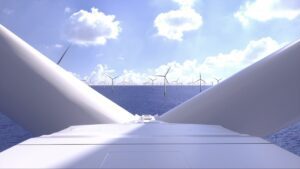Germany is expanding its renewable energy targets under a grand coalition agreement by the country’s two major political parties, but is also toying with the idea of introducing the concept of “virtual base-load”.
In a 168-document released by Chancellor Angela Merkel’s centre right CPD party and the smaller centre left SPD, it is clear that the two parties remain committed to the “Energiewende”, the transition away from nuclear and into an electricity grid dominated by renewables.
The document confirms that nuclear will be phased out by 2022 at the latest, and introduces new “renewable energy corridors” that call for renewable penetration to be lifted to 40-45 per cent by 2025, and to 55-60 per cent in 2035.
This expands and upgrades the current targets, which are for 35 per cent by 2020, and 50 per cent by 2030. The long-term target remains 80 per cent by 2050.
One of the key issues is the cost of the Energiewende, and the structure of the energy market, which analysts say has been broken by the impact of renewables, because their short-term marginal cost is pulling down the wholesale price of electricity. They two parties have agreed that there will be no retrospective changes to the feed-in tariff payments.
The new government is looking at introducing a capacity mechanism, but not before 2018, but one interesting new aspect is the idea of creating “virtual base-load capacity”.
The government intends to investigate whether large renewable energy producers would need to guarantee a contribution to reliable baseload supply to enhance the security of supply.
They could possibly do this with contracts and individual agreements with storage operators, or get “insurance” from other electricity producers, such as gas-fired generation.
“This could mean that renewable generators may be forced to buy “insurance” from conventional stations to provide this baseload capability (given the strong intermittency of wind, solar); this could likely imply some sort of a capacity payments from renewable generators to utilities,” a note from Deutsche Bank analysts said.
This could be positive for the some of the large centralised generation companies such as RWE and EON and it could have an impact on earnings for soalr and wind operators. However, the analysts say that because this is likely to slow the growth of renewables, “and thus the whole Energiewende”, it probably won’t happen.
However, Deutsche Bank also says the new renewables corridors could result in a “banding” strategy of having specific technology targets for renewables. There has been a lot of discussion in Germany about the need to ensure that the right technology is built in the right place.
(Note: We’ll have more on the German market options in coming days as we report more on the recent trip to Germany).







